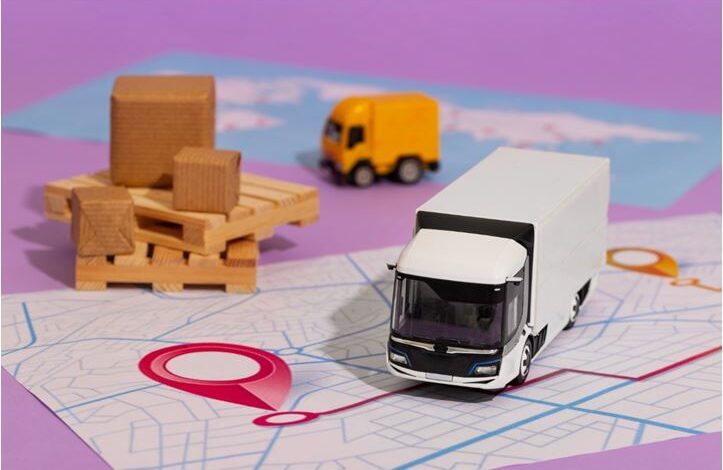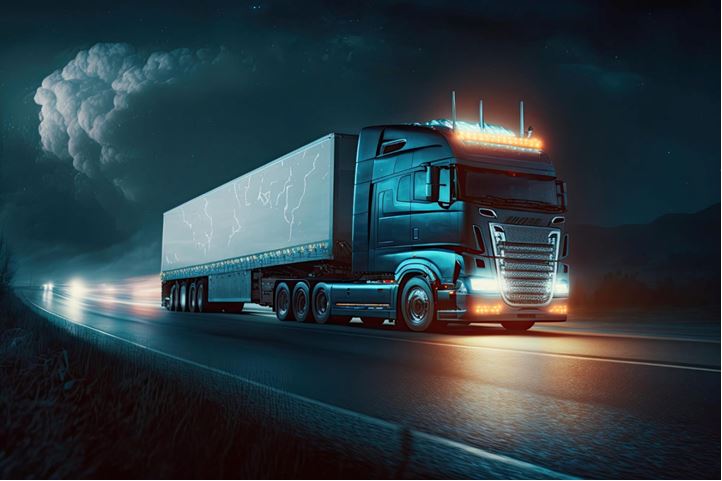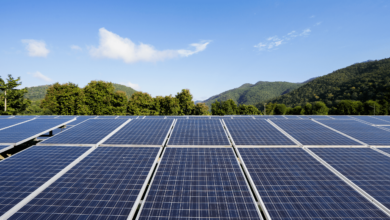Revolutionizing Roads: Top Transportation Industry Trends of 2024

Intro
The transportation industry is constantly evolving, and with the rise of technology, innovation and marketing through transportation industry email list, it’s no surprise that the roads we travel on are set to undergo a major transformation in the coming years. As we approach the year 2024, there are several key trends that are predicted to revolutionize the way we think about transportation. From electric and autonomous vehicles to advanced infrastructure and data-driven solutions, the industry is on the brink of a major shift.
The Rise of Electric Vehicles (EVs)
Electric vehicles (EVs) have been steadily gaining popularity in recent years, and by 2024, they are predicted to become even more prevalent on our roads. The rise of EVs is driven by the growing concern over climate change and the need to reduce carbon emissions. As governments around the world implement stricter regulations on vehicle emissions, more and more people are turning to electric vehicles as a sustainable and environmentally-friendly alternative to traditional gasoline-powered cars.
One of the key factors contributing to the rise of EVs is the continuous improvement in battery technology. As battery technology becomes more advanced and efficient, EVs are able to offer longer driving ranges and shorter charging times. This makes electric vehicles a more practical and viable option for everyday use. Additionally, the cost of EVs is expected to decrease in the coming years, making them more accessible to a wider range of consumers.
Autonomous Vehicles Hit the Streets
Alright, buckle up folks, because autonomous vehicles are hitting the streets and it’s going to be a game-changer! Just imagine, sitting back, relaxing, and letting your car do all the driving. Sounds like something out of a sci-fi movie, right? Well, the future is here, my friends, and it’s autonomous.
By 2024, we can expect to see more and more self-driving cars on our roads. These vehicles are equipped with advanced sensors and artificial intelligence that allow them to navigate the streets without human intervention. And let me tell you, it’s not just the tech giants like Tesla and Google that are investing in autonomous vehicles. Traditional car manufacturers are also jumping on board, recognizing the potential of this groundbreaking technology.
But what does this mean for the transportation industry? Well, for starters, it has the potential to revolutionize the way we commute. With autonomous vehicles, we can say goodbye to the stress of rush hour traffic and hello to a more efficient and enjoyable driving experience. These self-driving cars are programmed to follow traffic rules and communicate with each other, which means smoother traffic flow and fewer accidents.
And it’s not just personal vehicles that are going autonomous. Delivery services are also jumping on the bandwagon, with companies like Amazon and UPS testing out autonomous delivery trucks. Imagine your packages being delivered right to your doorstep by a self-driving vehicle. It’s like having your very own personal robot assistant!
Of course, there are still some challenges that need to be overcome before autonomous vehicles become mainstream. Safety is a major concern, and regulators are working hard to establish guidelines and standards to ensure the safe deployment of self-driving cars. Additionally, there is still a lot of skepticism and fear surrounding this new technology. People are worried about job loss and the potential for hacking and privacy breaches. However, as the technology continues to advance and more research is conducted, these concerns can be addressed.
The Expansion of High-Speed Rail
When it comes to traveling long distances, high-speed rail is becoming a popular choice. And by 2024, we can expect to see an expansion of high-speed rail networks around the world. But what exactly is high-speed rail? Well, it’s a form of transportation that uses specially designed trains to travel at speeds over 200 miles per hour. This means you can get from one city to another in a fraction of the time it would take by car or plane.
One of the major benefits of high-speed rail is its environmental impact. These trains produce significantly less carbon emissions compared to planes or cars, making them a more sustainable option for long-distance travel. Plus, with the rising concern over climate change, governments are investing in high-speed rail as a way to reduce carbon footprints and promote greener transportation.
Not only is high-speed rail environmentally friendly, but it also offers a comfortable and convenient travel experience. With spacious seating, onboard amenities, and the ability to work or relax during the journey, high-speed rail is a viable alternative to cramped planes or stressful road trips.
In terms of infrastructure, the expansion of high-speed rail requires significant investments in track construction, maintenance, and technology. Governments and private companies are working together to develop and implement new rail networks that connect major cities and regions. This means more opportunities for travelers to explore different destinations and for businesses to expand their reach.
Integration of Smart Technology in Infrastructure
Imagine a world where our roads are smart, connected, and efficient. Well, with the integration of smart technology in infrastructure, that world is not too far off. In the coming years, we can expect to see a major transformation in the way our transportation systems are designed and managed.
One of the key trends in transportation industry in 2024 is the integration of smart technology in infrastructure. This means that our roads, bridges, and other transportation structures will be equipped with sensors, cameras, and communication systems that can collect and analyze data in real time. This data can then be used to improve the efficiency and safety of our transportation networks.
For example, smart traffic management systems can detect traffic congestion and adjust traffic signal timings to optimize traffic flow. This not only reduces travel times for commuters but also decreases fuel consumption and carbon emissions. Additionally, smart infrastructure can enhance road safety by monitoring road conditions and providing real-time alerts to drivers about hazards such as accidents or icy patches.
Rise of Micromobility and Shared Transportation
Let’s talk about the rise of micromobility and shared transportation, two trends that are set to revolutionize the way we get around in 2024. Micromobility refers to the use of small, lightweight vehicles like electric scooters, bikes, and skateboards for short-distance travel. Shared transportation, on the other hand, involves services like bike-sharing and car-sharing, where multiple users can rent and share vehicles as needed.
Why are these trends gaining traction? Well, for starters, they offer a convenient and environmentally-friendly alternative to traditional modes of transportation. With micromobility options, you can easily navigate crowded urban areas without getting stuck in traffic or worrying about parking. These small vehicles are also electric, which means they produce zero emissions and help reduce our carbon footprint.
Shared transportation, on the other hand, is all about maximizing resources and reducing congestion. Instead of each person owning their own vehicle, shared transportation allows multiple people to use the same vehicle at different times. This not only saves money but also reduces the number of cars on the road, leading to less traffic and cleaner air.
In 2024, we can expect to see more cities investing in micromobility infrastructure, such as dedicated bike lanes and scooter parking zones. We can also anticipate the expansion of existing bike-sharing and car-sharing programs, making it even easier for people to access these services.

The Promise of Hyperloop Technology
Alright folks, let’s dive into the exciting world of hyperloop technology. Now, you might be wondering, what exactly is a hyperloop? Well, it’s a transportation system that involves pods or capsules traveling through low-pressure tubes at incredibly high speeds. And when I say high speeds, I mean we’re talking about speeds of up to 700 miles per hour! Can you imagine getting from one city to another in a matter of minutes? It’s like something out of a sci-fi movie, but the best part is, it’s not just a concept anymore, it’s becoming a reality.
By 2024, we can expect to see the promise of hyperloop technology taking shape. Several companies are already working on developing and testing hyperloop systems, with the goal of revolutionizing long-distance travel. These systems have the potential to drastically reduce travel times, increase connectivity between cities, and transform the way we think about transportation.
So, how does it work? Well, the hyperloop pods are propelled through the tubes using magnetic levitation and are powered by electricity. This means they produce zero emissions and are incredibly energy-efficient. And since they travel in a near-vacuum environment, there’s minimal air resistance, allowing the pods to reach those mind-boggling speeds.
The benefits of hyperloop technology are vast. Not only will it revolutionize long-distance travel, but it will also alleviate congestion on roads and in airports. By providing a fast, efficient, and environmentally-friendly mode of transportation, hyperloop systems have the potential to transform the way we live and work.
Conclusion
We have explored the top transportation industry trends of 2024 and how they will shape the future of our roads. From the rise of electric vehicles (EVs) to the integration of smart technology in infrastructure, the transportation industry is undergoing a major transformation. These trends are driven by the need for sustainable and efficient transportation solutions in the face of climate change and increasing urbanization.
The rise of EVs is a response to the growing concern over carbon emissions and the need to reduce our environmental impact. As battery technology continues to improve, EVs are becoming more practical and accessible to a wider range of consumers. The expansion of charging infrastructure is also making EV ownership more convenient and alleviating range anxiety.
Autonomous vehicles are set to revolutionize the way we commute and deliver goods. With advanced sensors and artificial intelligence, self-driving cars offer a safer and more efficient driving experience. While there are still challenges to overcome, such as safety and public perception, autonomous vehicles have the potential to significantly reduce traffic congestion and improve road safety.
High-speed rail is becoming a popular choice for long-distance travel, offering a sustainable and convenient alternative to cars and planes. The expansion of high-speed rail networks in 2024 will provide more opportunities for travelers to explore different destinations and alleviate congestion on roads and in airports.




